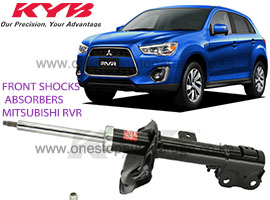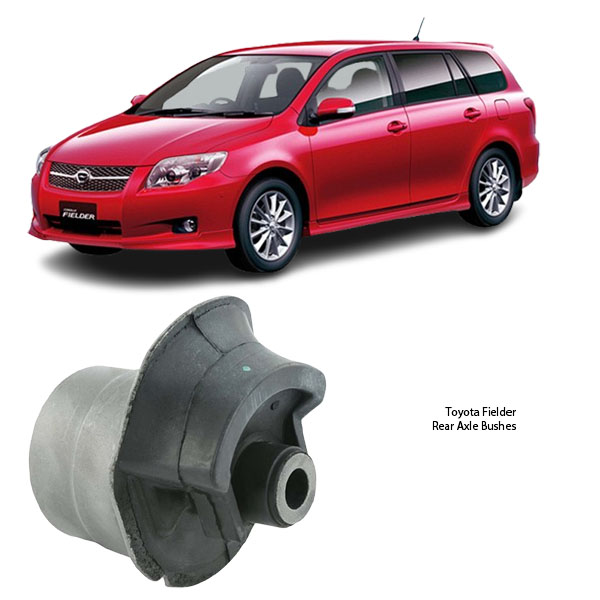-11%
Get Toyota Fielder 2WD Rear axle bushes 48725-02240 in Kenya
The rear axle bushes are an essential part of a vehicle’s suspension system, ensuring smooth handling, stability, and comfort. Despite their small size, these components play a huge role in reducing vibrations, absorbing shocks, and maintaining proper alignment of the rear axle.
In this detailed guide, we’ll explore:
✅ What rear axle bushes are
✅ Their function and importance
✅ Different types of axle bushes
✅ Common symptoms of worn-out bushes
✅ Replacement procedures
✅ Maintenance tips
✅ OEM vs. aftermarket bushings
By the end of this guide, you’ll have a thorough understanding of how rear axle bushes impact your vehicle’s performance and when they should be replaced.
1. What Are Rear Axle Bushes? 🏎️
Rear axle bushes (also known as bushings) are cylindrical rubber or polyurethane components that act as cushions between the rear axle and the chassis. They are mounted on axle beams, control arms, or suspension links to absorb road shocks and reduce metal-to-metal contact.
1.1 Purpose of Rear Axle Bushes
✔ Absorb shocks and vibrations from the road
✔ Reduce noise and harshness inside the cabin
✔ Maintain proper alignment of the rear axle
✔ Prevent excessive movement of suspension components
✔ Improve vehicle stability and handling
Without properly functioning rear axle bushes, the rear suspension would be rigid and noisy, leading to discomfort and potential damage to other components.
2. How Do Rear Axle Bushes Work? ⚙️
When a vehicle moves, the suspension system absorbs road irregularities. The rear axle bushes act as a buffer between the axle and chassis, allowing a controlled range of motion while preventing excessive flexing.
The rubber or polyurethane composition of the bushings helps:
✅ Dampen road shocks before they reach the passenger cabin
✅ Provide flexibility to the axle, reducing stress on metal parts
✅ Maintain axle geometry, ensuring proper wheel alignment
If the bushes wear out, you may experience clunking noises, poor handling, and increased vibrations.
3. Types of Rear Axle Bushes 🔄
3.1 Rubber Bushes 🏁
✔ Found in OEM (Original Equipment Manufacturer) suspension setups
✔ Excellent at absorbing noise and vibration
✔ Ideal for daily driving and comfort
❌ Prone to wear and tear over time
❌ Can degrade due to heat and oil exposure
3.2 Polyurethane Bushes 🏎️
✔ More durable than rubber
✔ Provides better stability and handling
✔ Resistant to oil and heat degradation
❌ Stiffer than rubber, which may result in a harsher ride
❌ May produce slight squeaking noises
3.3 Solid Metal Bushes 🏆 (For Performance & Racing)
✔ Provides maximum stiffness
✔ Ideal for high-performance vehicles
✔ Reduces unwanted movement for precise handling
❌ No vibration absorption – results in a very harsh ride
For most drivers, OEM rubber or polyurethane bushings offer the best balance between comfort and performance.
4. Symptoms of Worn or Faulty Rear Axle Bushes 🚨
Over time, rear axle bushes deteriorate due to exposure to:
- Heat 🔥
- Road debris 🌪
- Oil leaks 💦
- General wear and tear ⏳
4.1 Common Symptoms of Worn Bushings
🔴 Clunking or knocking sounds – Especially when going over bumps.
🔴 Increased vibrations – You’ll feel more shaking through the steering wheel and chassis.
🔴 Loose or unstable handling – The rear end may feel wobbly on turns.
🔴 Uneven tire wear – Misalignment due to excessive axle movement.
🔴 Excessive play in the suspension – Causing rear-end sway.
If you experience these symptoms, it’s time to inspect and replace the bushings.
5. How to Replace Rear Axle Bushes (DIY Guide) 🔧
Replacing rear axle bushes can be challenging, especially if they are pressed into the axle.
5.1 Tools Required 🛠️
✔ Jack and jack stands – To lift and support the vehicle
✔ Wrench set & socket set – To remove suspension components
✔ Bush removal tool or hydraulic press – To extract old bushes
✔ Lubricant (silicone grease or soapy water) – For easy installation
✔ Torque wrench – To tighten bolts to specification
5.2 Step-by-Step Process 🏁
1️⃣ Lift the Vehicle – Secure the rear with jack stands.
2️⃣ Locate the Bushings – Identify the worn axle bushes.
3️⃣ Remove Suspension Components – If necessary, detach control arms.
4️⃣ Extract Old Bushings – Use a bush removal tool or press them out.
5️⃣ Install New Bushings – Apply lubricant and press the new bushes into place.
6️⃣ Reassemble and Tighten Bolts – Torque bolts to manufacturer specifications.
7️⃣ Test Drive – Ensure everything feels stable and smooth.
⚠️ Note: If you don’t have access to a press, a professional mechanic can handle this job efficiently.
6. Maintenance Tips for Longevity 🏆
To extend the lifespan of your rear axle bushes:
✔ Inspect Bushings Regularly – Look for cracks, wear, or leaks.
✔ Avoid Excessive Load – Overloading can stress the suspension.
✔ Use Quality Lubrication – Prevents premature drying and cracking.
✔ Check for Oil Leaks – Oil can degrade rubber bushings quickly.
✔ Replace in Pairs – Always change both sides at once for even wear.
Regular maintenance and inspection can prevent costly suspension repairs in the future.
7. OEM vs. Aftermarket Rear Axle Bushes 🔄
When choosing replacement bushes, you can opt for:
7.1 OEM (Original Equipment Manufacturer) Bushings ✅
✔ Specifically designed for your vehicle model
✔ Offers comfort and durability
✔ Provides a factory-like ride quality
❌ Usually more expensive than aftermarket options
7.2 Aftermarket Bushings 🔧
✔ Available in performance-focused materials (polyurethane)
✔ Can enhance handling and response
✔ More affordable than OEM
❌ Some aftermarket brands may reduce ride comfort
💡 For daily driving, OEM or high-quality aftermarket rubber bushings are the best choice. For performance vehicles, polyurethane bushings provide better stability.
9. Conclusion 🎯
The rear axle bushes are a critical component in your vehicle’s suspension system. Proper maintenance, timely replacement, and choosing the right material ensure a smooth, quiet, and stable ride.
✅ Inspect bushings regularly to avoid costly damage.
✅ Choose high-quality rubber or polyurethane replacements.
✅ Replace in pairs for even wear and consistent handling.
A well-maintained suspension system improves comfort, handling, and safety—so never overlook the importance of rear axle bushes! 🚗💨
Follow us on Facebook for more parts.



